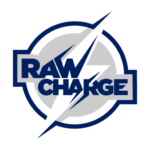Not all prospects are created equal.
Some develop quickly. They’re confident out of the gate, they work hard, they experience early success and maintain it.
Others take more time to adjust to the rigor of a professional schedule and may not arrive in the NHL for several years after being drafted. It’s important to remember that no two development paths are exactly the same, and each player has obstacles to overcome and deficiencies to work out before they reach the best hockey league in the world and play there full-time.
For a team as deep as the Tampa Bay Lightning have become under GM Steve Yzerman and Director of Amateur Scouting Al Murray, those obstacles were perhaps a bit more frequent and a bit more difficult than they would have been in some other organizations.
For that reason, criticizing Brett Connolly for not reaching the NHL sooner on a team loaded with young talent while putting up very good numbers in the AHL seems shortsighted. If slow, measured development is a good thing, then Connolly’s past two years in the AHL should be viewed as a positive, a necessary maturation process, not a black stain on his status as a blue chip prospect.
Here’s how the panel ranked him:
| Kyle Alexander | John Fontana | Clare Austin | Mike Gallimore | Clark Brooks |
| 11 | 13 | 13 | 14 | 11 |
Last Year’s Rank: 7
That’s quite the tumble for the 6th overall pick from the 2010 NHL Entry Draft and the current regime’s first selection in control of the Tampa Bay Lightning, albeit with barely a month on the job when the draft rolled around.
Like Vlad Namestnikov before him, however, Connolly falls not because of a poor AHL season, but rather because of strong campaigns in other leagues by players that leapt ahead of him.
After a strong debut season in the AHL with the Syracuse Crunch in 2012-13 (31 goals and 32 assists in 71 games), Connolly followed it up with another very strong year, ending up with 21 goals and 36 assists in 66 contests. That puts him just under a point-per-game for his career in the AHL and suggests he can be an impact scorer in the NHL — using basic NHL equivalencies, a full 82-game season for Connolly would project to about 32 points, similar to the scoring rates in the NHL last year of Nikita Kucherov and J.T. Brown.
From staff writer Allokago’s player reviews at Chairman How’s Glorious Army:
Connolly … struggled at various points this past season with the Crunch. Although the occasional recall to the NHL seemed to bolster his attitude for short periods of time, it wasn’t until Tampa Bay traded for forward Jonathan Marchessault and he joined the roster that Connolly really found his stride again. Being paired with such an obviously talented playmaker definitely increased Connolly’s confidence. Connolly scored 5 goals and netted 10 assists during the month of March, his best month this season. His April totals might have surpassed those numbers had Syracuse played more games …
… much of his latter play in Syracuse seemed to have been more on par with what was originally expected of him. Connolly was an alternate captain with the Crunch, so the coaching staff clearly believed in his leadership ability.
There were some issues, undoubtedly, because Connolly is not a superstar defensive forward and Syracuse was a mess on defense and in goal. But the offensive results are undeniable — he was smart and creative with the puck, strong through the neutral zone, and instrumental on Syracuse’s power play (6 power play goals), typically playing in the high slot position that Teddy Purcell normally occupied for Tampa Bay.
While he has a good chunk of NHL experience to his credit already, almost all of it was accrued either as a 19-year old kept up in the NHL to prevent him from going back to an unhealthy development environment in the WHL or spent out of role/position, either on the 4th line being used sparingly or played at center in the top-6. Moving to center is an extremely difficult thing to do for even the most talented wingers, especially as a greenhorn in the NHL, so judging Connolly on a bad 11-game stint with Tampa Bay after Steven Stamkos‘ injury is probably unfair — not to mention his bad run of luck during that small sampling of games. Only PC Labrie saw worse on-ice save and shooting percentages (PDO) at 5v5 than Connolly did last year with the Lightning.
It’s unknown now where Connolly will slot into the lineup this fall, but after signing a new one-year extension earlier this year and losing waiver exemption, it’s clear he will either be on the NHL team or traded when the season starts. Based on usage in Syracuse, a role similar to Teddy Purcell’s last season — as a middle-6 forward with the opportunity to earn power play time — seems like the best option. Playing him on the right side with one of the top three centers (Steven Stamkos, Valtteri Filppula, and Tyler Johnson) would be the best way to maximize his potential in the NHL and give him the best chance to finally succeed long-term as an NHLer.

